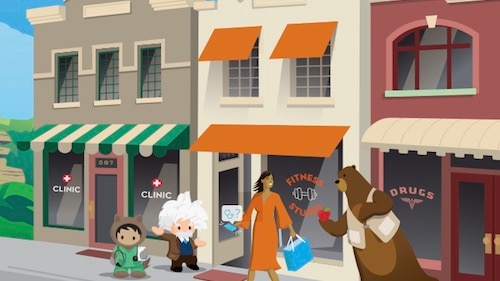According to Trends in Healthcare and Life Sciences Marketing, more than half of healthcare marketers view the customer journey as the primary vehicle for patient experience improvements. In this new digital-centric landscape, “journey” means much more than marketing and includes reaching a patient on their terms at critical times, such as acquisition, onboarding, and retention.
Despite understanding the need to create a lifelong connected patient experience, only 44% of healthcare marketers say they provide a journey that is completely aligned with patient expectations. There’s an obvious gap between what healthcare marketers know will provide a return on investment in the relationship and what they deliver to their patients and customers.
The modern patient journey is rooted in data and leverages multiple channels to create a personalized experience. That means, every interaction with a current or prospective patient is an opportunity to learn more, promote self-directed engagement, and deliver better service.
When Piedmont Healthcare, a Georgia-based system serving more than 2 million patients, reimagined its patient journey the organization realized an estimated annual benefit of $1.6 million. “ As a not-for-profit, community health system, it is critical that we put the patient experience at the center of everything we do,” said Andrew Chang, Executive Director of Marketing and Physician Outreach at Piedmont Healthcare.
Want to be like Piedmont?
Here are some moments around which you can build patient journeys:
Awareness and acquisition
Acquiring the right mix of new patients can be one of the most expensive parts of your marketing efforts, it can also provide an incredible opportunity for ROI. Understanding your market is key to microtargeting potential patients in your area.
First and third-party data can help create a rich understanding of your audience. Once you know what an ideal patient mix looks like, you can use that information to deliver more personalized marketing experiences, bringing more of your total addressable market into the funnel.
Onboarding new patients
Once you’ve acquired a new patient, build trust by crafting a journey that introduces her to your practice and acclimates them to your facility. You can send appointment reminders and with the data you acquired when they set up the appointment, such as insurance information, you could even prompt them to pay the copay prior to a visit, creating efficiency in the revenue cycle.
It’s estimated that no-shows cost $150 billion annually. A single-physician medical practice loses $150,000 each year when patients fail to show up for appointments.
The goal of this journey phase is to set the foundation for a lifelong commitment to your organization while also reducing these costly no-shows. After the appointment, get paid quicker using emails and text messages to prompt the patient to pay the bill.
Retain and engage current patients
According to the Trends in Healthcare and Life Sciences Marketing report, 79% of consumers believe the experience a company provides is as important as its products and services, but, generic content isn’t enough.
Reduce the risk of losing a patient to another provider or system and increase the opportunity for cross-service line revenue by providing relevant information on health topics that provide value to your patients’ unique circumstances. Using the data you’ve acquired on your patient throughout their journey you can understand, for example, if they fall into the age group for a regular mammogram screening and send them information related to breast health that includes a call-to-action for setting up an appointment with one of your providers.
Keeping patients healthy by partnering with them on a long-term health management journey can increase loyalty and promote better results for the population you serve. Helping your sickest patients remember appointments or take vital medication, can create better outcomes and reduce readmission rates.
Creating a digital journey may seem daunting at first, but it really is as simple as putting patients’ needs first — and that’s something you’ve been doing all along.
Want more? Check out these customer journey mapping resources and learn more about how marketers are changing the face of healthcare.




























